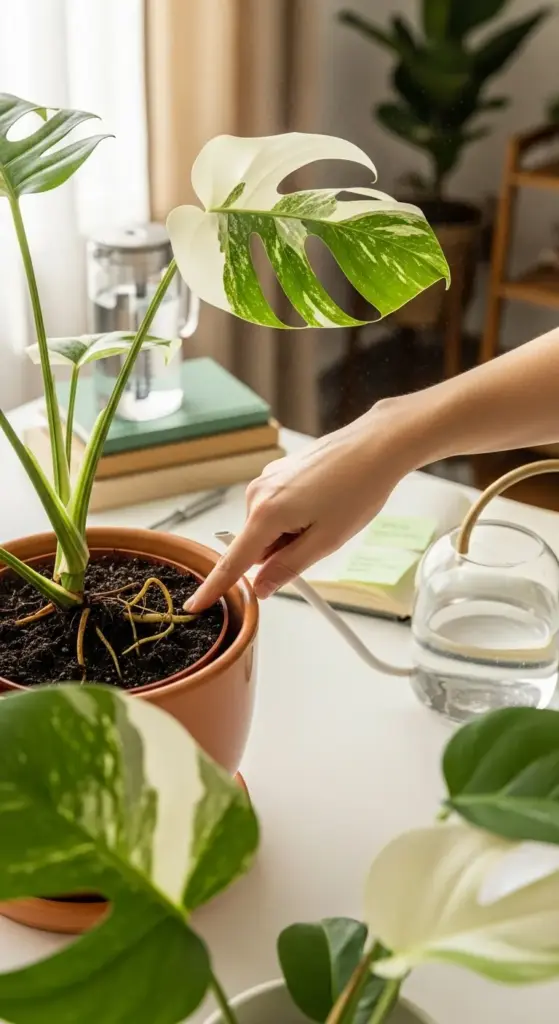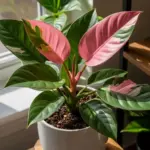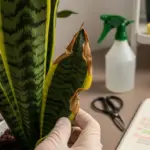2. Perfect Your Watering Technique to Prevent Root Rot

I’ve killed more plants with kindness (aka overwatering) than I care to admit. My first Monstera variegata turned into a $150 lesson in what root rot actually looks like.
Spoiler alert: it’s not pretty. Black, mushy roots and that awful smell still haunt my plant parent nightmares.
But here’s the thing – once I figured out proper watering techniques, my success rate went from maybe 30% to about 95%. These tips literally saved my plant collection.
The Finger Test Method That Changed Everything
Forget those fancy moisture meters that never seem to work right. Your finger is the most reliable tool you’ll ever need for soil moisture testing.
I stick my index finger about 2 inches deep into the soil, right near the edge of the pot. If it comes out clean and dry, it’s watering time.
If there’s any soil sticking to my finger or it feels even slightly damp? I wait another few days and test again.
This simple technique has prevented more root rot disasters than any expensive gadget I’ve bought. Trust your finger over everything else.
Deep Watering vs. Light Sprinkling
Here’s where I messed up for years: giving my plants little sips of water every few days. Deep, infrequent watering is the secret sauce for healthy root development.
When I water now, I really go for it. I pour water slowly until it starts draining out the bottom holes, then I pour a little more.
This encourages roots to grow deep and strong instead of staying shallow and weak near the surface. Strong roots equal strong variegation.
The goal is to completely saturate the soil, then let it dry out properly before the next watering session.
Water Quality: Filtered vs. Tap Water
I used to think water was just water. Then I noticed my plants looking sad despite perfect care routines, and realized my tap water quality was the culprit.
Most tap water contains chlorine and fluoride that can build up in soil over time. My variegated leaves started getting brown tips that wouldn’t go away.
Now I use filtered water or let tap water sit out for 24 hours before using it. The chlorine evaporates and my plants are noticeably happier.
Room temperature water is crucial too – cold water can shock the roots and cause stress that shows up in the leaves.
Seasonal Watering Adjustments
This one took me forever to figure out, but seasonal watering changes are absolutely essential for apartment living.
Summer means faster drying, so I’m watering about every 5-7 days. Winter? Sometimes I go 2-3 weeks between waterings because the soil stays moist longer.
I also factor in heating and air conditioning. My apartment gets super dry in winter with the heat running, but summer AC can actually slow down water evaporation.
Your plant’s growth rate changes with seasons too – less growth means less water uptake.
Creating a Realistic Watering Schedule
Let’s be honest – most of us have busy lives and can’t check our plants every single day. I created a flexible watering routine that actually works with my schedule.
I do my finger tests every Sunday and Wednesday. If the plant needs water, great. If not, I check again in a few days.
I keep a simple note in my phone with watering dates. No fancy apps needed – just basic tracking so I don’t accidentally water twice or forget completely.
The key is consistency in checking, not consistency in watering frequency.
Emergency Root Rot Recovery
When you catch overwatering symptoms early, you can usually save your plant. Yellow leaves, mushy stems, and that funky smell are your warning signs.
I immediately stop watering and check the roots. If they’re brown or black and squishy, it’s surgery time.
Cut away all the damaged roots with clean scissors, repot in fresh, well-draining soil, and cross your fingers. I’ve saved about 70% of my overwatered plants this way.
The hardest part is resisting the urge to water while it recovers. Less is definitely more during the healing process.
Reading Your Plant’s Thirst Signals
After years of practice, I can tell when my Monstera needs water just by looking at it. The leaves get slightly less perky, and new growth slows down.
Healthy watering patterns create consistent new leaf production every 2-4 weeks during growing season.
Overwatered plants often produce smaller, less variegated leaves because the roots can’t function properly to support healthy growth.
Think you’ve got watering down? Wait until you see how humidity can make or break your variegation game! Click “next” to discover my favorite budget-friendly humidity hacks that turned my dry apartment into a tropical paradise – including the $3 trick that doubled my plant’s growth rate!









GIPHY App Key not set. Please check settings